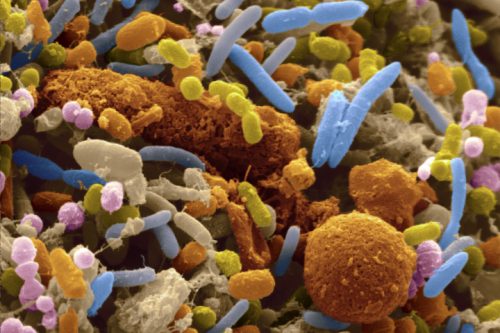Most of us have heard of good bacteria or, perhaps on a whim, have bought probiotics that contribute to the multi-billion dollar ‘gut health’ industry. These are references to some of the microorganisms, the sum of which are called the microbiota, found in the gut of humans and in other multicellular organisms.
The microbiota is understood to be responsible for a wide range of functions in humans, from immunity to digestion to vitamin production. Recent, more rigorous studies have also shown that microbes influence our individualized drug responses and that they have a significant presence in blood plasma. However, we still do not fully understand how the microbiota interacts with hosts and influences physiology. Further, there is much still to discover on which bacteria in the microbiome play what roles, if any, since the vast majority may be unimportant to us.
This potential for discovery set the stage for researchers in Noah Palm’s lab at Yale. As the complexity and diversity of the microbiome is so vast, the researchers’ narrowed their focus to a large family of cell membrane receptor proteins called G-protein coupled receptors (GPCRs), encoded by our own genome. Microbes that produce GCPR ligands, which activate GCPRs, were hypothesized to be amongst the important. In their study, the researchers sought to develop a method to evaluate which gut microbes produce these biologically-relevant protein-activating ligands and to determine how, if at all, they impact host physiology.
Functional profiling was central to this investigation. It sought to improve upon limited, time-consuming methodologies from previous studies aimed at identifying new GCPR ligands. The researchers used a screening technology, called Parallel Receptor-ome Expression and Screening via Transcriptional Output-Tango (PRESTO-Tango). “Instead of analyzing one GCPR at a time, with PRESTO-Tango, we could take measurements on 400 at once,” Palm said. Human gut bacteria—spanning five different phyla and representing 144 unique bacteria—were isolated from inflammatory bowel disease patients and cultivated in a series of monocultures. The supernatant, separated by centrifugation, from these monocultures were used for PRESTO-Tango screening.
Additionally, germ-free mice, sterilized to remove all microbes, were artificially bred with mock communities of a few specific microbes to allow for a better simulation of human microbiota and to isolate the effects of specific microbes. Gut microbe-derived compounds, such as histamine, were analyzed from accumulations in the gut, serum, and fecal output of mice.
The results confirmed that the gut microbiome produces a wide, abundant variety of GPCR-activating ligands, with the ligands produced largely shown to be independent from bacteria’s biological classification. The microbes were each uniquely explored. “We ended up following the interesting things that microbes were doing down whatever path it took us. It took us far beyond immunobiology.”
The researchers identified several supernatants that activate dopamine or histamine receptors, and, subsequently the ligands and their activation patterns. Notable amongst the identified microbes was a strain called M. morganii, which was examined in both mice and in vitro. Its histamine secretions were found to significantly impact intestinal motility—observed via fecal output—and were enhanced by diet and in human patients with Crohn’s Disease.
Surprisingly, several orphan receptors—GCPRs which lack a known activating ligand—were matched with activating molecules and therefore de-orphanized. Furthermore, many interactions between metabolites and GPCRs were uncovered that could impact host physiology. In terms of the role of diet, the types of amino acids which are consumed were shown to be linked to the microbiome not only in their decomposition as part of digestion, but also in their production from microbes as their source. A strain of Bacteroides was found to produce an amino acid that activated an orphan receptor found in the intestine and pancreas; it was inferred that the receptor therefore may act as a nutrient sensor during digestion.
“[The study] really highlighted the pervasiveness of this kind of crosstalk between hosts and their microbes. We used a relatively small screen to analyze a handful of bugs
[microbes]
in a simplified way, yet, even still, the number of new intersections we we able to uncover was remarkable,” Palm said. For example, the identification of microbes that produce histamine-activating ligands has implications relating to the treatment of depression, since, unlike dopamine, it can cross the blood-brain barrier and affect mood.
Provided that the results are verified against more complex in vivo conditions, future studies could realistically make further discoveries on biologically relevant microbes. “I know it’s cliché, but this really is the tip of the iceberg.” This does not, however, mean that all the bacteria that will be uncovered will be beneficial. While we like to see our microbes as virtuous, this study represents only the first step toward a rigorous and rational understanding of how we interact with them, let alone their potential to cure disease.

